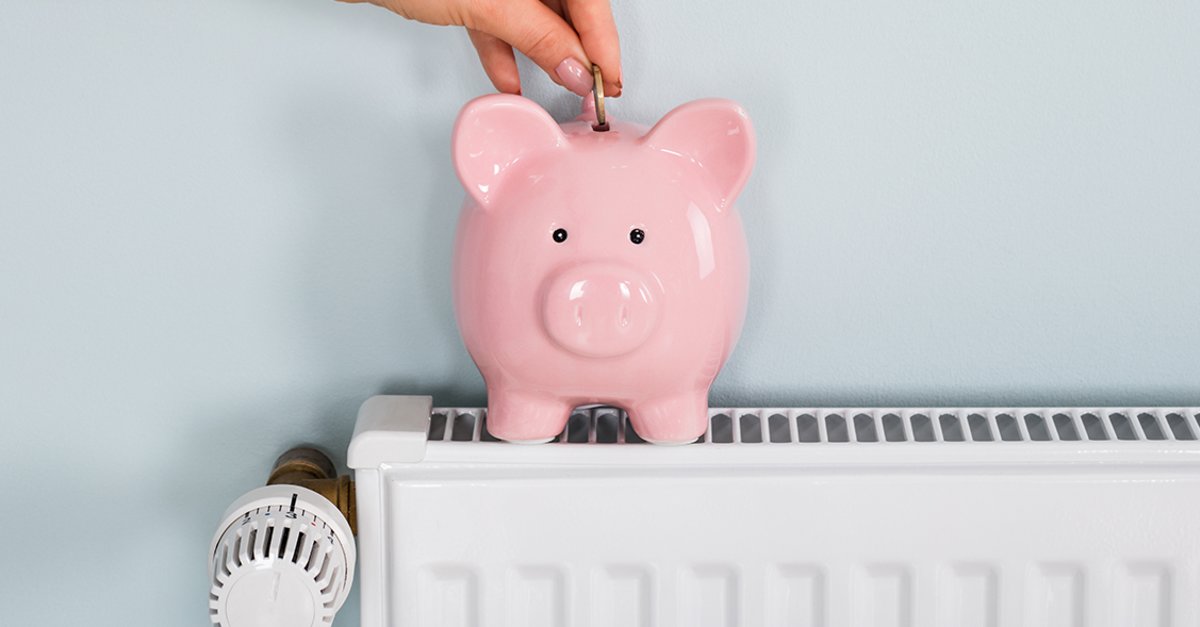Heat properly: 19 ingenious tricks that save money immediately
It’s actually the same every year: “Winter’s coming” and with it the time of gurgling radiators. The heating bill is our final opponent, which could be particularly tough this year. We’ll tell you here which skills you can still use to defeat him.
Around a quarter of the energy consumed is used for heating every year. It is therefore important that the respective rooms are heated correctly – especially with rising electricity prices. Did you know that every room should have a different temperature? No? No problem, we have refreshed our knowledge for you.
As already mentioned, different rooms require different temperatures. In living rooms it should be around 20 degrees (level 3 on the thermostat), while the temperature in the bathroom should be around 23 degrees (between 3 and 4). In the children’s room, a pleasant 22 degrees is preferred, while in the bedroom there should be around 15 – 16 degrees. A setting of level 2 is sufficient here. In unused rooms, the setting can even only be set to 1.
Anyone who thinks that heating less means saving electricity (or gas) is wrong. Because if the temperature in the room falls below 12 degrees, it takes too long to warm up the rooms properly again. In addition, a room that is not properly heated could become moldy.
If a room is heated too much, its humidity drops. If the air is dry, it promotes respiratory diseases and colds.
The doors to rooms that are heated little or not at all should always remain closed. Otherwise the rooms, which should actually be warm, cool down and vice versa.
Before you go on holiday, the heating should never be turned off completely. It is much better to let them run at a low temperature. 12 degrees (level 1) is desirable, for shorter trips you should even set the heating to 15 degrees (level 1-2).
If you want to use the full potential of your heater, you should avoid placing heavy objects in front of and on top of the heater. Even thick drapes or drapes prevent warm air from fully dissipating. And cats? Maybe her too.
Important: It’s not just fresh air that needs to get in, the pent-up moisture is also let out when the room is ventilated. Therefore, all rooms should be ventilated for ten minutes about twice a day. Ideally, you should fully open two opposite windows at the same time.
As already mentioned: tilted windows should be avoided. You have fresh air all day long, but they definitely drive up your heating bill. The walls also cool down, which increases the risk of mold forming.
Gluck, gluck, gluck. Everyone knows. The gurgling is a warning signal for too much excess air in radiators. That is why radiators should be bled regularly. Preferably before the next heating season begins.
It’s hard to believe, but things will pay off! In this way, every resident of the house can adapt the heat supply to their individual needs.
To keep the heat where it should be, the windows should remain closed overnight. But in the morning it’s time to ventilate well!
Roller shutter boxes should be well insulated, especially in old buildings. In order to insulate the boxes later, soft insulating mats can be attached to the inside. Cold wind also comes into the house through radiator niches. The walls there are often thinner, which in turn means heat loss. Here you should definitely insulate afterwards.
Did you know that absolutely airtight windows can bring cost savings of up to 30 percent? Now you know! Even if windows are often double-glazed, they are of little use if the frames are leaky. You can quickly remedy this with simple insulating tape.
What applies to windows also applies to doors. If it pulls through them, consumers should also seal them. The simplest are the tried and tested draft excluders, which are available in all shapes and colors.
Easier said than done! But replacing the heating pump can save up to 130 euros a year. Modern models have the advantage that their performance is adapted to daily needs. They consume around 100 kilowatt hours less per year than their older counterparts.
Turning the heating down by just a few degrees at night can save a lot. For example, if you reduce the temperature from 20 to 17 degrees, you have five to ten percent less heating costs per year.
Everyone used to have them: carpets. Nowadays there are fewer and fewer of them. Surprisingly, this changes the personal perception of cold. Studies have shown that this makes rooms around two degrees warmer. They are also cuddly and cats love them.
Who can can! To heat water, a solar system on the roof is an important investment that will pay off.
Listen up, homeowners! When building houses, you should definitely use new building materials. Ytong, for example, but also sand-lime brick constructions in combination with vacuum insulation panels or KS-Quadro-Aquatherm keep energy consumption low right from the start.
Also interesting:
Shopping at Amazon: Everyone should know these 19 tricks40 Ikea hacks that you wish you had known earlierTop 10: These smartphones are currently very popular with you



